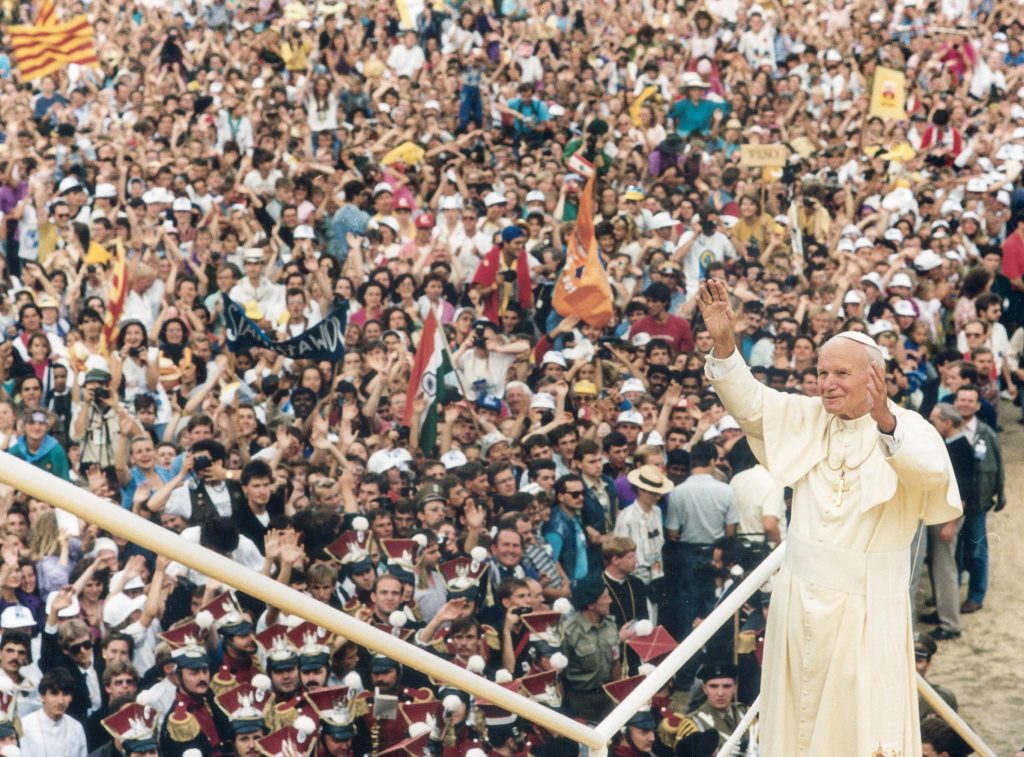“Do we still believe in purgatory?”
It was a question my mom asked me a few years after I started working as a Catholic journalist. My mom had been well formed in the faith. She lived for a time in a lay Christian community long before the Second Vatican Council, and she was a part of the English liturgy movement, also before the council.
Yet her question, for me, was an example of the confusion that did exist in that period of upheaval and change that followed the council (and that simultaneously was taking place in much of the rest of the world.) Vatican II was a gift of the Holy Spirit. If there had been no council, I firmly believe, the Church would have been in much worse shape in the tumultuous years that followed. But for many Catholics, the changes, both superficial and significant, were dizzying.
When I think about why St. Pope John Paul II wanted to create the Catechism of the Catholic Church, I think of my mom’s question. Two decades after the council, there was a felt need among Church leaders for an authoritative compendium of what the Church taught. But the catechism itself reflected the spirit of the council. It drew heavily on the Fathers of the Church and Scripture as well as Church documents. It sought to communicate not just the breadth and depth, but also the beauty of the Church’s teachings.
For those who have a distant memory of rote learning as typified by the Baltimore Catechism, the Catechism of the Catholic Church was a surprise. One friend of mine, upon reading it for the first time, called it “lyrical.” Divided into four parts, its pillars were the profession of faith, the sacraments, the moral teachings, and prayer. That fourth section on prayer was particularly pastoral and meditative. “Prayer is the life of the new heart,” one section begins, and quotes St. Gregory of Nazianzus: “We must remember God more often than we draw breath.” But it then adds, “we cannot pray ‘at all times’ if we do not pray at specific times,” launching a presentation on types of prayer.
It’s a sizable book, about 900 pages, with paragraphs numbered for reference and a glossary as well. One flaw is a maddeningly inadequate index, still not fixed after 30 years.
The publication of the catechism was not immediately embraced by everyone. After all, the debates that spawned the need for such a book did not end with its arrival. In the world of religious education, the U.S. bishops waged a steady pressure campaign to root religious instruction in the catechism. They demanded it be a well-utilized reference, not placed forgotten on a shelf.

Today, every significant religious education program in this country has gone through a “conformity process” of review and correction, a collaboration that engaged the bishops’ conference, experts, and publishers. This was a monumental accomplishment.
The original intention of Rome was for the catechism to be for professional use, such as when the bishops worked with catechetical publishers. Local bishops’ conferences were encouraged to create more user-friendly versions, as ours did with the United States Catholic Catechism for Adults. A significant contributor to that popular volume was the late Father Alfred McBride, O. Praem., a gifted catechist and author who incorporated story into the text along with meditations and discussion questions.
But the original Catechism of the Catholic Church has remained a best-seller and is itself utilized in many parishes, and not just as a reference book.
Some years ago, I participated in a three-year review of the catechism for parish leaders and other interested parishioners. Developed by Father James Shafer, a remarkable pastor in Fort Wayne, Indiana, it was so successful that he repeated it for another three-year cycle. The impact was dramatic, giving parishioners a new confidence in their knowledge of their faith.
Intended by Pope John Paul to be a “systematic presentation,” it is a resource and a support but not the faith frozen in amber. In fact, in the most recent edition, the teaching on the permissibility of the death penalty was changed from “very rare if not practically non-existent” to “inadmissible.”
It also is not a checklist substitute for the encounter with Christ and the experience of divine love that is the heart of the Christian faith. “The primary object of our faith is not a proposition but a person,” St. Thomas Aquinas said.
The catechism is not a club to beat one another with, though we do seem to do a good job at that these days. Rather, in the words of the Roman Catechism, it accomplishes its purpose if “anyone can see that all the works of perfect Christian virtue spring from love and have no other objective than to arrive at love.”
And yes, mom, we still believe in purgatory. It’s paragraph 1030.

